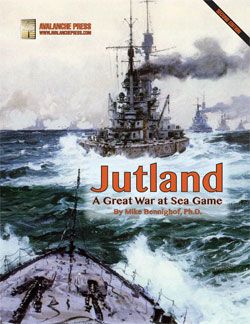Great War at Sea: Jutland (2006) Board Game
Great War at Sea: Jutland is a board game that simulates the famous naval battle of Jutland during World War I. The battle took place on May 31 to June 1, 1916, between the British Royal Navy’s Grand Fleet and the German High Seas Fleet in the North Sea. It was the largest naval battle of the war and a pivotal moment in naval history.
Game Components of Great War at Sea: Jutland
How To Setup Great War at Sea: Jutland
Setting up the game involves placing force markers on the operational map, which represents the North Sea and other relevant areas. Players must allocate their ships into battle groups and ensure they have the necessary resources, such as fuel. The game includes several historical scenarios, including the Battle of Jutland, the Scarborough, Lowestoft, and Gorleston Raids, which require specific setup configurations based on historical data.
Gameplay Mechanics and Game Objective
Player Experience
Playing **Great War at Sea: Jutland** involves a mix of strategic planning and tactical execution. Players must navigate the operational map to establish contact with enemy forces, using dice rolls and modifiers to determine outcomes. The game emphasizes the historical context of naval warfare during World War I, including the importance of fuel management and ambush tactics. The game’s design allows for a variety of scenarios, from small-scale engagements to large fleet battles, offering a rich and varied experience.
Pros
Cons
Personal Thoughts on Great War at Sea: Jutland
**Great War at Sea: Jutland** is ideal for gamers who enjoy historical wargames and naval strategy. It is particularly suited for those interested in World War I naval history and who appreciate the blend of operational and tactical gameplay. While it may not be the best fit for casual gamers due to its complexity, it offers a rich and immersive experience for those willing to invest the time and effort to master its mechanics.
We are supported by our audience. When you purchase through links on our site, we may earn an affiliate commission, at no extra cost for you. Learn more.

